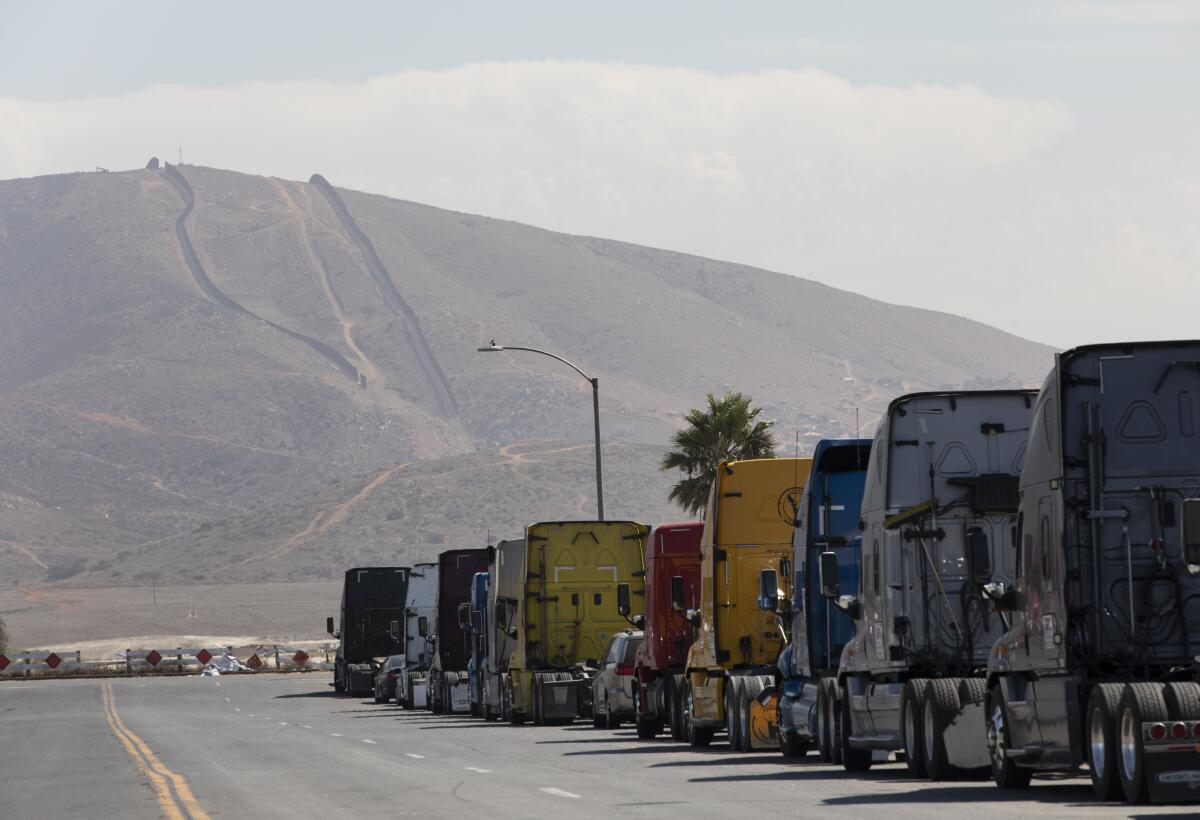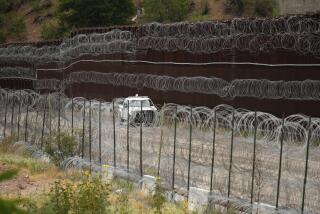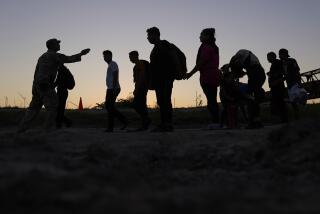Border wait times swell as staffing shortages plague inspection booths

Customs and Border Protection says wait times regularly surpass two hours in regular passenger vehicle lanes.
SAN DIEGO â Since the U.S.-Mexico border reopened in November to nonessential travel, border waits have swelled to exceedingly long lines that could stifle local commerce and economic recovery.
According to the Smart Border Coalition, about 120,000 passenger vehicles, 63,000 pedestrians and 6,000 trucks cross back and forth between San Diego and Tijuana every day.
Before the COVID-19 pandemic, the value of trade between San Diego and Mexico consistently topped $4 billion a year. Commercial exchange between Tijuana and San Diego was valued at $2.1 million daily.
Border waits have been unpredictable during the pandemic, with essential workers sometimes having to sleep overnight in their cars at the border to make sure they make it to work on time. Early on, trade and commerce between the two countries drastically slowed, permanently closing many small businesses that line the border on both sides.
The lifting of the travel ban on Nov. 8 ended more than 18 months of restrictions and coincided with the start of the holiday shopping season, allowing in nonessential tourists who had proof of their COVID-19 vaccination and proper documentation to legally enter the U.S.
As of Thursday, data show border wait times regularly surpassing two hours in regular passenger vehicle lanes, according to the U.S. Customs and Border Protectionâs border wait times webpage.
Staffing, not infrastructure, is the problem. From 2004 to 2015, the U.S. government spent $741 million to expand and improve the San Ysidro Port of Entry. The 62 northbound inspection booths, spread out over 34 lanes, were supposed to speed up border crossings.
But now there arenât enough Customs and Border Protection officers to man the booths.
The National Treasury Employees Union, an independent union that represents federal employees, including border agents, says Customs and Border Protection doesnât publicly disclose staffing levels for security reasons.
According to testimony the union gave to Congress in June, the agency has had to solicit officers from other ports âfor temporary duty assignment to San Ysidro, Otay Mesa and Calexico land ports of entryâ in order âto support the workload and operational challenges facing the San Diego Field Office, such as wait times in excess of four hours.â
The agency says it is processing larger travel volumes, and that wait times have not significantly increased.
âTravel volumes at the Southwest border increased from 7.6 million last year during the same four weeks to 12.2 million travelers, still less than pre-COVID levels when CBP officers processed nearly 14 million travelers in the same time period in 2019,â the agency reported in its November 2021 operational update. âOf note, however, travelers have experienced shorter wait times than even pre-COVID, largely in part to advances in technology, including facial biometrics and the CBP OneTM mobile application.â
Public officials in the region say they plan to press the federal government on the issue in the new year, which they say will be vital to San Diegoâs regional economic recovery.
More to Read
Sign up for Essential California
The most important California stories and recommendations in your inbox every morning.
You may occasionally receive promotional content from the Los Angeles Times.











